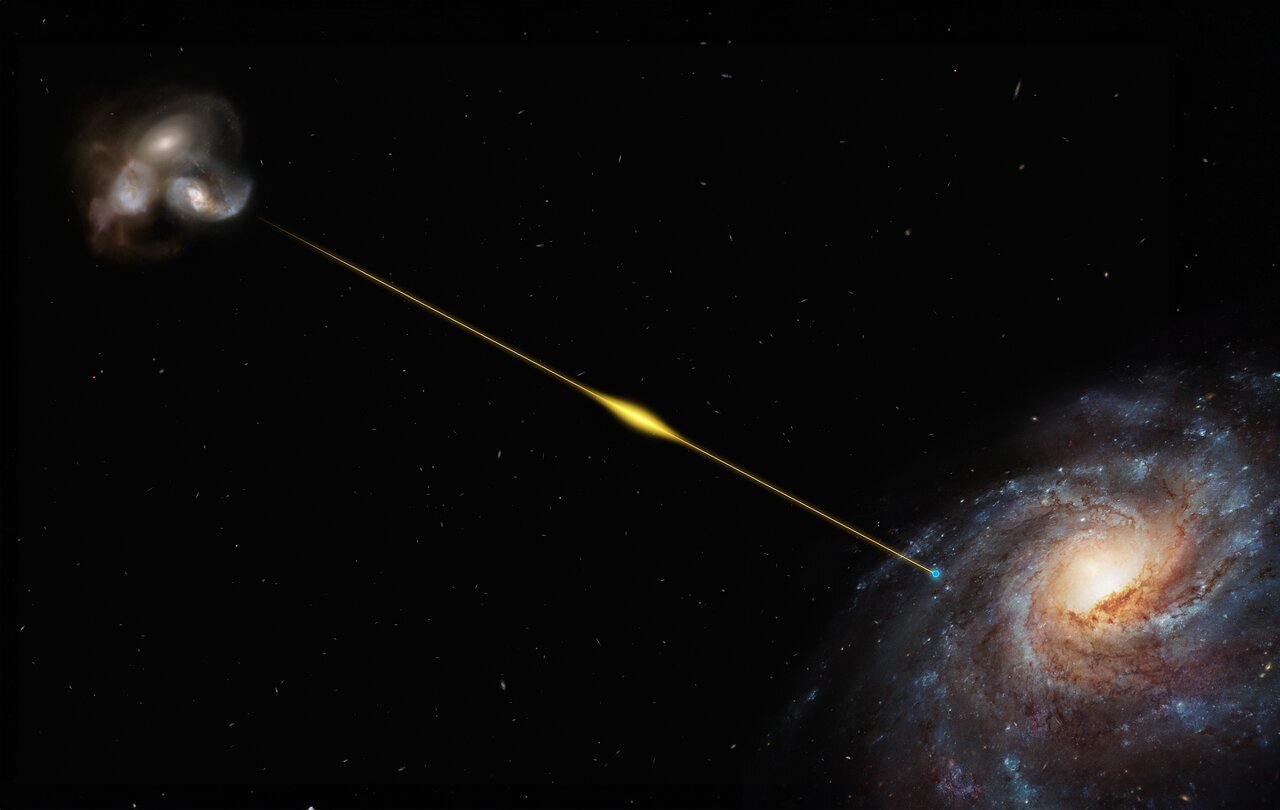
This artist’s impression (not to scale) illustrates the path of the fast radio burst FRB 20220610A, from the distant galaxy where it originated all the way to Earth, in one of the Milky Way’s spiral arms. The source galaxy of FRB 20220610A, pinned down thanks to ESO’s Very Large Telescope, appears to be located within a small group of interacting galaxies. It’s so far away its light took eight billion years to reach us, making FRB 20220610A the most distant fast radio burst found to date. Credit: ESO/M. Kornmesser.
Summary of the paper “A luminous fast radio burst that probes the Universe at redshift 1” by Ryder et al. Summary author: Walter Beckwith/AAAS:
Observations from a bright fast radio burst probe the distant universe
An unusually high-energy fast radio burst (FRB) from a high-redshift galaxy has offered new insights into the distant universe, challenging current models of FRB emission. The findings also help constrain key attributes of these astrophysical phenomena. FRBs are brief pulses of radio emission originating from distant extragalactic sources. Although the astrophysical processes that cause FRBs aren’t fully understood, the signals they produce can be used to infer information about the cosmic environments they pass through as they travel across the universe, including the nature of their galaxies of origin and the distribution of plasma in the intergalactic medium. Previous studies have shown that FRBs localized to host galaxies at different redshift exhibit a positive correlation between the extragalactic dispersion measure (DM), the density of electrons the radio signal passed through as it traversed the intergalactic medium, and the host redshift – a measure known as the Macquart relation. However, this relation has only been measured using identified FRB host galaxies at nearby redshifts. Here, Stuart Ryder and colleagues describe observations of the particularly luminous burst FRB 20220610A and localize its source to a galaxy with a complex morphology located at redshift ~1.01. According to the findings, the non-Galactic DM of FRB 20220610A is higher than what is predicted by the Macquart relation based on previous measurements. This discrepancy indicates passage through additional turbulent magnetized plasma in either the interstellar medium of the host galaxy or the foreground intergalactic medium. Moreover, Ryder et al. show that the FRB was unusually energetic, exceeding predictions by previous FRB population models by a factor of 3.5, challenging models of the FRB emission mechanism and demonstrating the existence of a population of high-energy high-redshift FRBs.
